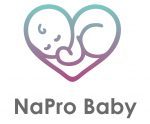NaProTECHNOLOGY has expanded the uses of the Creighton Model System into the treatment of a variety of different gynecologic conditions and these uses will continue to expand with further research.
With NaProTECHNOLOGY, we treat all women for Woman’s Health & Married couples (registry or religious) for Infertility & Miscarriages
Infertility
- NaProTECHNOLOGY has expanded the uses of the Creighton Model System into the treatment of a variety of different gynecologic conditions and these uses will continue to expand with further research.
- Infertility is a symptom of underlying disease. The diseases that cause infertility have a “two-pronged” effect. They not only hinder the functioning of fertility, but they also cause both short and long-term health problems. The persistent unwillingness to address infertility problems from this point of view or perspective is one of the major flaws in the current approach to the treatment of infertility.
- More here: http://www.naprotechnology.com/infertility.htm
- The Goals of NaProTECHNOLOGY in Infertility
- It works towards assessing the underlying causes (male & female) of the reproductive abnormality.
- It allows for the treatment (medical & surgical) of these underlying causes.
- It assists the couple in achieving pregnancy while maintaining the natural acts of procreation.
- If the treatment program is unsuccessful, research into the unknown causes is undertaken.
- If medically unsuccessful, the program will assist with successful family building by being supportive of adoption.
- Progress is monitored through the changes in the CrMS fertility chart, the monthly blood test for progesterone & oestradiol and ultrasound follicle tracking scans.
Recurrent Miscarriage
- Spontaneous abortion (Miscarriage) is defined as the spontaneous loss of pregnancy prior to the 20th gestational week of pregnancy. Pregnancy losses which occur during this period of time are said to occur in about 15 percent of pregnancies. At the same time, the risk of miscarriage increases proportionately to the number of previous miscarriages experienced.
- Miscarriages are multifactorial and a variety of factors – both female & male – underlie the occurrence of miscarriage. These include genetic, hormonal, anatomic, immunologic and microbiologic variations. In addition, ovulation defects and mucus cycle abnormalities can also be observed. We are slowly coming to recognize that no miscarriage can be considered normal. All miscarriages are the result of a pathophysiologic reproductive event.
- In women with recurrent miscarriage, 85 percent will have endometriosis. This often goes unidentified because a diagnostic laparoscopy is not performed, so a referral for a laparoscopy (“key-hole surgery” will be made to an endometriosis specialised surgeon.
- Progress is monitored through the changes in the CrMS fertility chart, the monthly blood test for progesterone & oestradiol and ultrasound follicle tracking scans.
- With NaProTECHNOLOGY, the success rate in the case of recurrent miscarriages can be up to 80%, depending on age & underlying causes.
- More here: http://www.naprotechnology.com/abortion.htm
- Find more help with the Miscarriage Association of Ireland http://www.miscarriage.ie/
Progesterone Support During Pregnancy
- It is essential that the different underlying abnormalities (both female & male) are treated and that normality is restored in the cycles BEFORE conception occurs again for an increased chance of a successful pregnancy.
- It has also been known for a long time that progesterone is decreased during the first trimester of pregnancy in patients who have spontaneous abortions. There is evidence that progesterone given in early pregnancy may be useful in some women with recurrent miscarriage and that the measurement of serum progesterone levels in early pregnancy allows for adequate supplementation and better outcome.
- More here: http://www.naprotechnology.com/progesterone.htm
Prematurity birth prevention
- A prematurity prevention program has been developed and implemented at the Pope Paul VI Institute for the last 25 years.
- The program begins by identifying those patients who are at high risk for going into preterm labor. These patients are then taught how to self-monitor their uterine contractions. When indicated, supplemental progesterone is provided while monitoring serum progesterone levels and tocolytic therapy (usually with Terbutaline) is used for symptoms of uterine irritability (contractions).
- In addition to the above, antibiotic therapy is provided to those patients who break through their tocolytic therapy. Ultrasound assessment of the cervix is also used according to risk criterion, symptoms or pregnancy condition. If ultrasound assessment of the cervix indicates, cervical cerclage is placed. This entire protocol cannot be properly discussed in a web site such as this, however, it can be stated emphatically that the prematurity rate can be decreased with the use of this protocol.
- For More call our Doctors and check here: http://www.naprotechnology.com/prevention.htm
Postpartum depression
- 20 percent of women will suffer from depression. Many seek treatment from primary care providers, but up to 50 percent may go unrecognized and more go untreated.
- Recognition and treatment of depressive disorders in pregnancy and during the postpartum period is critical for the healthy outcomes of both the mother and infant.
- Postpartum depression is identified as a major depressive disorder with postpartum onset. It is a major depressive episode that usually begins within the first four weeks following delivery. It can be extremely variable in both severity and duration.
- Symptoms include the following: fatigue, changes in appetite or sleep, dysphoric mood, loss of interest in usually pleasurable activities, psychomotor agitation or retaliation, recurrent thoughts of death/suicide, feelings of worthlessness or guilt (especially failure at motherhood), and excessive anxiety over the child’s health.
- “Help in available. Contact your NaProTECHNOLOGY Medical consultant for advice”.
- More here: http://www.naprotechnology.com/depression.htm
Premenstrual Syndrome (PMS)
- The diagnosis of PMS at the Pope Paul VI Institute includes the following list of symptoms: irritability, breast tenderness, bloating, weight gain, carbohydrate craving, crying easily, depression, headaches, fatigue and insomnia.
- The important aspect of diagnosis is that these symptoms must begin at least four days prior to the onset of menses. If they occur within three days of the onset of menses, they are considered to be normal premenstrual molimina.
- In addition to these 10 core symptoms, other symptoms have also been documented in this group of patients.
- More here: http://www.naprotechnology.com/pms.htm
Male Factor Infertility
- Fertility is a biological function of both the husband and wife, who, through sexual intercourse, unite their gametes.
- When a woman has difficulty achieving pregnancy, an evaluation for that problem must involve, not only her, but also her husband. This evaluation can be helpful at giving important information to the couple so they may better understand the future capability of their procreative potential. In many cases, sperm parameters can be improved with simple life style changes and NaProTECHNOLOGY treatments. A referral for urological assessment and possibly varicocele surgery will be made when necessary.
- More here: http://www.naprotechnology.com/maleinfertility.htm
Surgical NaProTECHNOLOGY
- The Society of Reproductive Surgeons, a group within the American Society of Reproductive Medicine, work together to help other surgeons in improving the surgical skills necessary to do some basic and most advanced reconstructive pelvic surgeries and foster the development of postgraduate fellowship programs which would have, as one of their major emphases, training in pelvic surgery, microsurgery, laser surgical applications, and so forth.
- These training programs have grown slowly over the past 10 years, but it is in this area that Surgical NaProTECHNOLOGY has its major focus.
- Surgical NaProTECHNOLOGY is a specialized form of gynecologic surgery whose primary aim is to reconstruct the uterus, fallopian tubes and ovaries in such a way that pelvic adhesive disease can be eliminated and not caused by the surgical procedure itself.
- Surgical NaProTECHNOLOGY offers:
- “Near-Contact” Laparoscopy
- Surgical removal of endometriosis
- Wedge Resection for Polycystic Ovaries
- Preventing Adhesions
- Selective Hysterosalpingography
More here: http://www.naprotechnology.com/surgical.htm
More Applications
- Menstrual cramps
- Polycystic Ovarian Syndrome (PCOS)
- Hormonal abnormalities
- Chronic discharges
- Targeted hormone evaluation
- Targeted hormone replacement
- Identify ovarian cysts
- The effects of stress
- Chronic infections
- Other reproductive disorders
- Irregular/abnormal bleeding
- Dating pregnancy
- Psychosexual understanding
A more complete discussion of this can be found on the web site www.naprotechnology.com.










